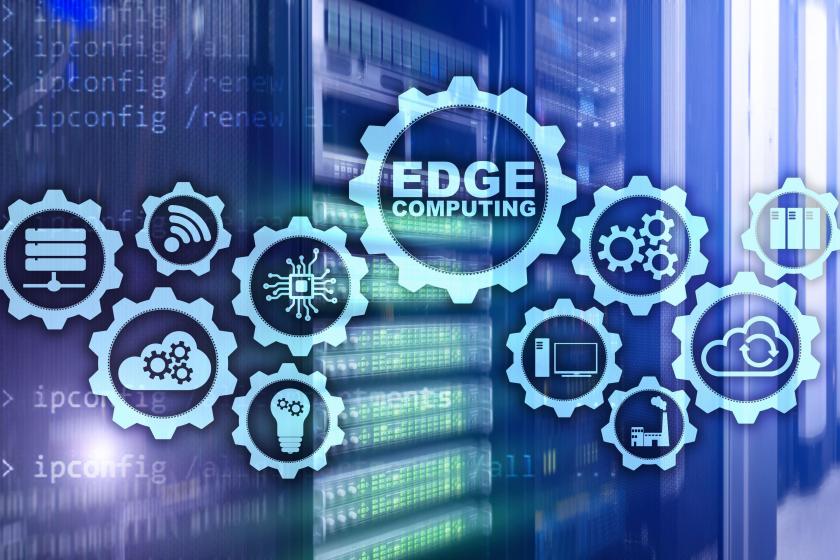Rethinking the Impossible: How AI Makes Edge Computing Even More PowerfulRethinking the Impossible: How AI Makes Edge Computing Even More Powerful
Edge computing has evolved from its legacy foundations to its modern format where servers are closer to the end user. Now, the addition of AI allows real-time, automated analysis and insights at the edge, providing benefits for a wide variety of industries.
February 12, 2024

Edge computing captures and processes data closer to where it's being generated, which enables analysis and automated responses to happen faster, reducing the latency required to respond. The rapid insights allowed by edge computing can help businesses make better and faster decisions, something that’s important in every competitive industry.
In the early 2000s, networks began to evolve toward hosting applications on servers located away from centralized data centers. This resulted in the first distributed commercial computing services, hosting applications such as video streaming, dealer locators, data aggregators, and ad insertion engines. It was during this era that the term “edge computing” was born.
Today, many organizations use a simple form of edge computing, even if they don’t commonly call it that. For example, a retailer’s point-of-sale system often uses edge compute to track store activity and automatically decrement onsite inventory. And any application that employs sensors (such as energy facilities, factories, or traffic control systems) might also be leveraging computing at the edge to capture and analyze data.
One of the challenges of “legacy” edge computing systems is that they often require distributed management and deployment, which can make updates and changes very resource-intensive. While modern edge computing servers are distributed, management and monitoring is more centralized. This provides a significant advantage over legacy edge systems that suffer from cumbersome application rollout and little visibility into application performance at each site.
AI Transforms the Edge
On its own, edge computing is a game changer. Now, with AI enhancement, these two powerful technologies enable high speed autonomous decision making. With AI, the analysis of even the most complex requirements can be made at the edge. However, this also requires more computing power to be able to handle the data.
This emerging combination goes far beyond simply gathering data. Now, data can be processed and analyzed using servers accelerated by Intel® Xeon® processors at the edge equipped with GPUs, running AI models. This added element of on-site intelligence enables advanced analytics and autonomous action to unfold without delay, providing new levels of efficiency.
AI improvements to edge computing are powering industries as diverse as retail, to improve the customer experience and bottom line, healthcare, where remote patient monitoring can streamline care in hospitals and at home, and farming, where sensors detect environmental changes and adjustments are made to generate higher crop yields and resource savings.
In manufacturing, advanced video analytics could monitor product quality 24/7 to detect even minute defects. From there, AI algorithms could self-correct production processes to maintain quality control. All of this could occur automatically with AI-enhanced edge technology.
Self-Healing Systems
Edge computing is frequently enlisted to operate in remote, and sometimes harsh, environments. You might think of offshore oil rigs, dusty factories, or distant retail outlets where space and IT support are scarce. The ideal edge equipment is compact, rugged, autonomous, and self-healing.
Algorithms can be trained via machine learning to predict, detect, and respond to IT operational issues. Then the model can continuously monitor for faults, and once an issue is detected, AI-supported analysis can identify the root cause of the problem and guide remedial action. Self-healing ensures that a system operates effectively and efficiently, without human intervention. In industries such as railroad safety, this automated issue detection can actually be life-saving.
Benefits of AI at the Edge
Here’s a summary of some of the benefits of edge computing, and ways in which AI can take it to the next level.
1) Real-time insight & action: Edge technology with AI modeling analyzes data locally rather than in a faraway cloud, providing real-time insights. Decision making and execution is significantly faster, and can be autonomous.
2) Reduced cost & increased efficiency: Modern edge computing with AI enables automatic and controlled rollout of applications across sites. IT teams don’t have to travel to troubleshoot or install new features.
3) Improved monitoring, maintenance & self-healing: With modern edge solutions, central help desk and operations have visibility into application performance at each site. With AI-enhanced edge computing, systems can detect, diagnose, and remediate problems without the need for IT support.
4) Increased privacy: Edge computing with AI can improve privacy by processing data locally, reducing the need to expose information to the cloud, which can help businesses protect their customers’ data.
David Johnson is the Senior Product Marketing Manager of PowerEdge at Dell.
Learn more about AI and the Edge
Related article:
About the Author
You May Also Like



